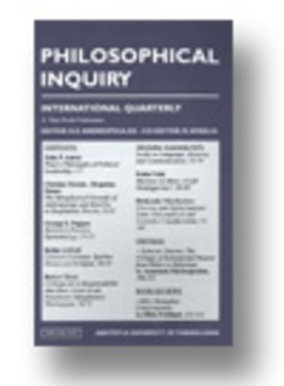The antilogistic puzzle of Hume's appendix to the Treatise
Part of : Philosophical inquiry ; Vol.XX, No.3-4, 1998, pages 22-30
Issue:
Pages:
22-30
Author:
Abstract:
I aim to determine the nature and solution of the puzzle over which Hume lamented in his Appendix to the Treatise. After explaining his account of why we ascribe identity to the mind, I frame his problem in terms of an antilogism: How can it be that (i) perceptions are distinct existences, (ii) nothing joined by perceived connections is a distinct existence, and yet it seems that (iii) we perceive connections between some perceptions? I reject the attempt of most commentators to locate the problem in our notion of personal identity itself and instead argue that because Hume was committed to the epistemic priority of what is presented to us in consciousness, he in fact thought we do, in a sense, perceive connections between perceptions. I explore a few ways in which he might have arrived at this conclusion. Drawing on the Husserlian conception of consciousness, I argue that the antilogism is avoidable and rests on a confusion of the simplicity of the contents of consciousness and their unity. Hence, in the Appendix, Hume worried over what we should see as a pseudo-problem.
Subject:




